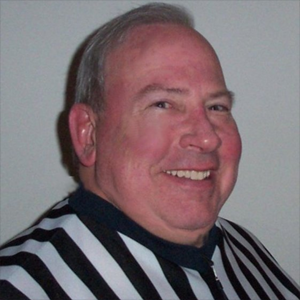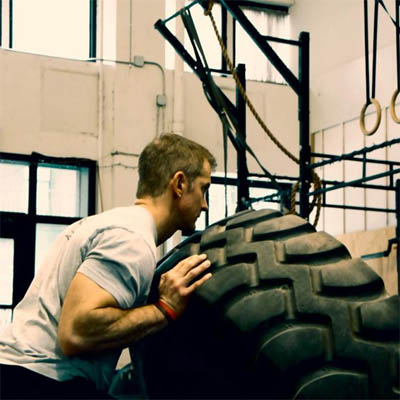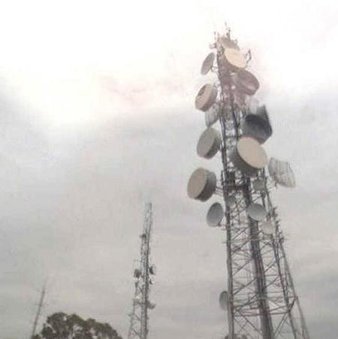
Rndballref
20 Years Experience
Chicago, IL
Male, 60
For twenty years I officiated high school, AAU and park district basketball games, retiring recently. For a few officiating is the focus of their occupation, while for most working as an umpire or basketball referee is an avocation. I started ref'ing to earn beer money during college, but it became a great way to stay connected to the best sports game in the universe. As a spinoff, I wrote a sports-thriller novel loosely based on my referee experiences titled, Advantage Disadvantage
Carrying the ball is one of ways the rule book states that a dribble comes to an end. So the very next dribble should be called as a double dribble if the player carried the ball prior to the subsequent dribble. My opinion is that refs have allowed too much carrying to go on - the dribbler gains too much control of the basketball if you let a player cup or turn over the ball.
see the answer below. In summary, Home Management can eject anybody. Usually the AD works closely with the coach so in practical terms, the answer is yes.
I am not sure what you mean by trap. Are you saying the defender steps closer and prevents the dribbler from moving because of the outstreched arm of the dribbler? Then yes, the defender can move as long as he is entitled to the spot on the floor. But if you are saying the defender somehow holds the arm of the dribbler it is a common foul. If I have missed the point of your question rephrase it and I will try again.
In the violations section of the rule book regarding free throws, it states that the free throw shooter shall have neither foot beyond the vertical plane of the edge of the free throw line which is further from the basket.
This restriction ends when the ball hits the ring, backboard or until the free throw ends.
So no, a player cannot soar through the air leaping from the semi-circle to dunk a ball - he would have to cross the vertical plane of the free throw line.
CrossFit Coach
 Why is Crossfit so popular with women?
Why is Crossfit so popular with women?
EMT
 Does your crew ever fake an emergency to slice through traffic?
Does your crew ever fake an emergency to slice through traffic?
Radio program/music director
 Do radio stations have to pay royalties to artists to play their songs?
Do radio stations have to pay royalties to artists to play their songs?
It is confusing because there are different philosophies of how to call these situations. The rules clearly state that a foul intentionally committed should be called intentional and administered with 2 free throws and the ball at point of interruption.
Most referees will avoid calling intentional fouls if the foul is not severe, the player attempted to go after the ball, and/or did not grab the player. Here is the dilemma...if you wait to make sure a foul is a foul when the whole gym is expecting one then it looks bad not to call an intentional and play can get rough. If you have a quick whistle on first contact it looks like you are aiding the losing team in their attempt to foul their way back into the game.
I wish I had a better answer for you. This is one of the toughest judgement calls in the game.
There is no provision for a referee to overrule another official in the Federation rules book, however in practice one official is designated as the referee in a crew with a responsibility to resolve simultaneous calls. My experience is that before the game this situation is discussed between officials. I think it is important to get the call correct, but each referee has his own area to watch. So if I make a call that one of my partners sees a different way I want that official to approach me, tell me what they saw, I give my perspective and then I decided if I will overrule my own decision. That way I can defend the final outcome. So, a few principles: 1) a ref should be watching their own area - that is why you have 2 or 3 of them, 2) there is some overlap and sometimes a second look sees something you can miss, and 3) officials should decide how they will consider overruling each other before the game. Based on your description (that the shot was clearly made from inside the 3 point line), regardless of how the ref's changed the call they apparently got it wrong.
In a two man crew there are occasions when the trail official should call three seconds. Imagine the ball in the corner near the sideline and endline (baseline), on the lead official's side of the court (the lead is the ref on the endline). The lead should drift toward the sideline with the body angled away from the basket. That leaves the trail official responsibility to look into the paint, and possibly call 3 seconds. By the way, I rarely called 3 seconds in Varsity games - because I think it is the perfect advantage/disadvantage call. That is even though someone is camped out for 3+ seconds, I would only interrupt the game for 3 seconds if that player received the ball or captured the rebound.
-OR-
 Login with Facebook
Login with Facebook (max 20 characters - letters, numbers, and underscores only. Note that your username is private, and you have the option to choose an alias when asking questions or hosting a Q&A.)
(A valid e-mail address is required. Your e-mail will not be shared with anyone.)
(min 5 characters)
By checking this box, you acknowledge that you have read and agree to Jobstr.com’s Terms and Privacy Policy.
-OR-
 Register with Facebook
Register with Facebook(Don't worry: you'll be able to choose an alias when asking questions or hosting a Q&A.)